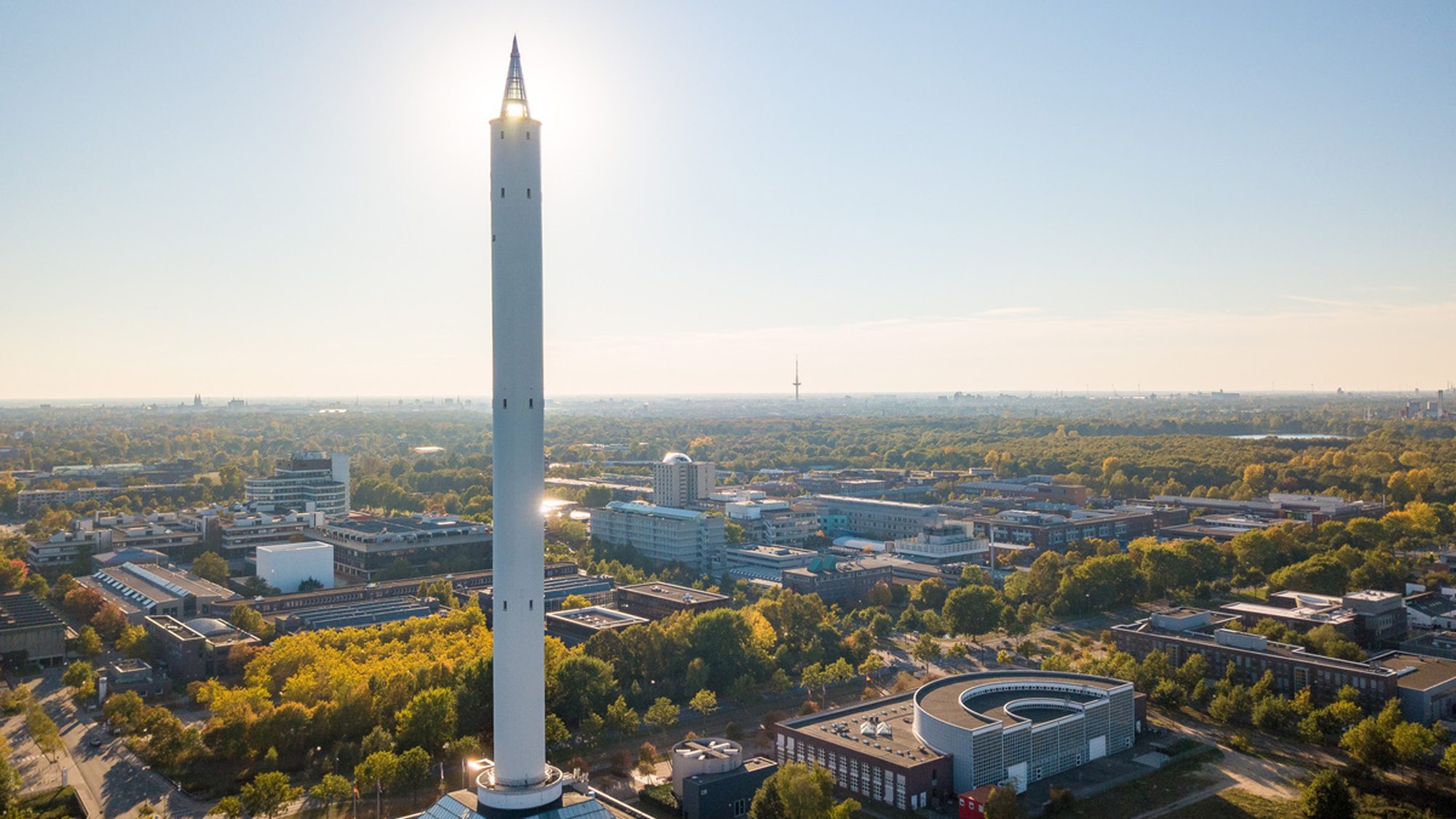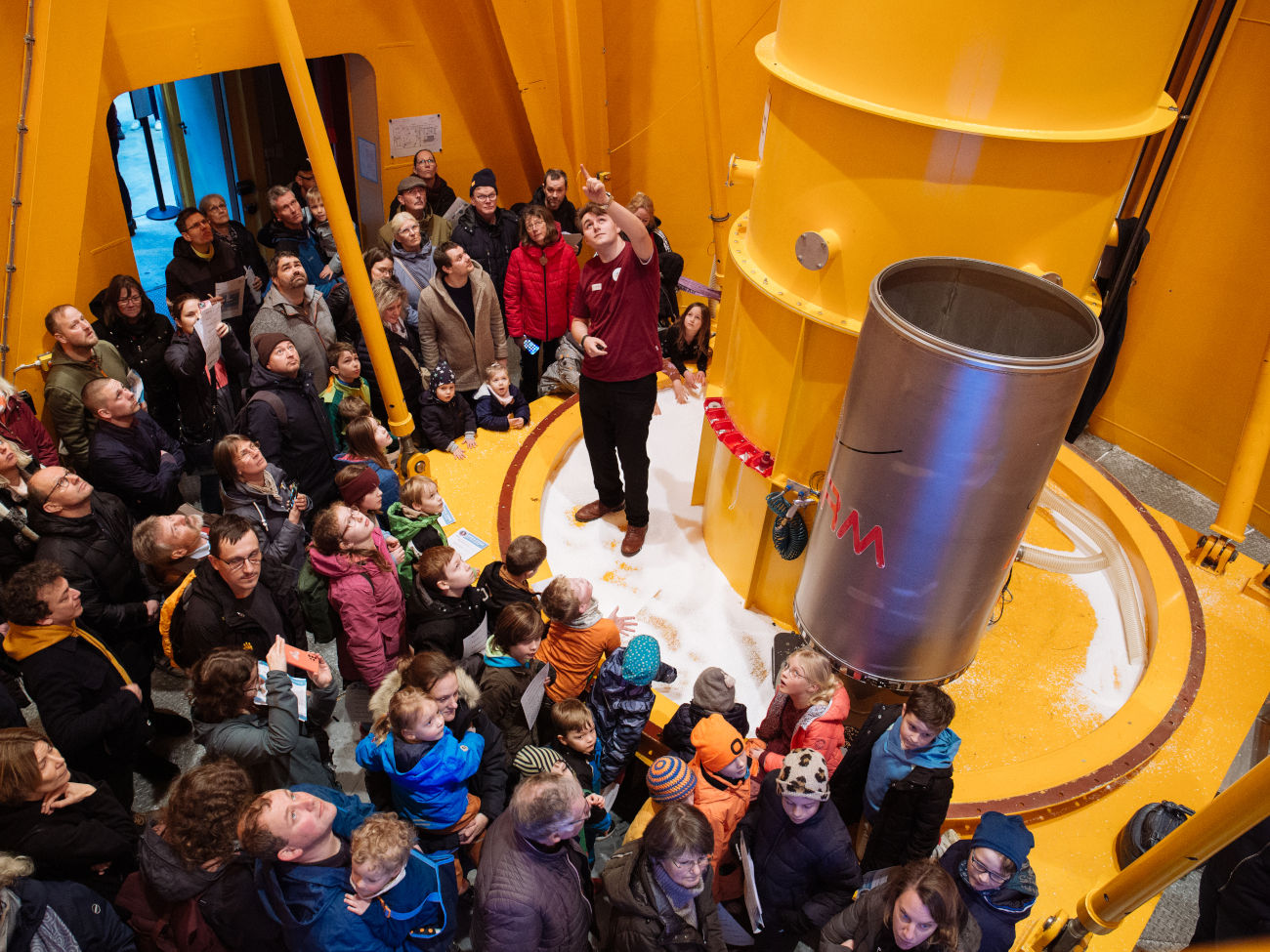
© Jonas Ginter
Have You Heard of ... ZARM?
A look behind the doors of the Center of Applied Space Technology and Microgravity (ZARM)
The Drop Tower located on the University of Bremen campus attracts a lot of attention. However, few people know what lies behind the doors of ZARM, the Center of Applied Space Technology and Microgravity, at its feet. A special highlight was its recent Open Day, which not only provided an insight into the space research conducted there, but also attracted numerous space enthusiasts.
Research in Microgravity Conditions
ZARM is widely known for its Drop Tower, the only one of its kind in Europe. With a height of 146 meters, this laboratory for research in microgravity conditions allows scientists to carry out experiments in free fall of up to 9.3 seconds. These experiments are based on the fundamental physical principle of free fall and the sophisticated technology of the laboratory facility. The Drop Tower thus opens up a wide range of research areas – from materials science to biology – and is appreciated by local and international researchers alike.
Recently, the 10,000th experiment took place in the Drop Tower. The experiment focused on foundation research into Sustainable Hydrogen Production on Earth or Other Planets. However, the Open Day was not just an occasion to celebrate this anniversary; it also provided a comprehensive insight into the various research areas at ZARM. These include Drop Tower experiments in microgravity conditions on topics such as research into Fire Safety in Space or on Bose-Einstein condensates (The Coldest Place in the Universe).
Visitors were also able to explore the second zero-gravity laboratory, the GraviTower Bremen Pro, which was officially opened in 2022. With up to 20 experiments per hour, the GraviTower allows for an unprecedented repetition rate, significantly expanding the range of research options at ZARM. The experiments can run almost continuously, for 2.5 seconds at a time. Soon, the GraviTower will be able to simulate the gravitational forces of other celestial bodies so that research can be carried out under gravitational conditions of Mars, Moon, or an asteroid.

© ZARM / Universität Bremen
Research at ZARM – Much More Than Microgravity Research
But ZARM is much more than just a place for research in microgravity. The Gravitational Physics research group is dedicated to fascinating phenomena. These include, for example, black holes, which are detected by telescopes in the depths of the universe and deciphered at ZARM with the help of mathematics and physics. Another research team is dedicated to fluid mechanics, with a focus on turbulence in fluid flows, such as those encountered in a wide variety of areas – be it in pipelines or in the finest blood vessels in the human body.
The scientific field of exploration research, which focuses in particular on Mars, is another new field of research. Here, researchers are working on self-sufficient Mars Stations with autonomous life-support systems or refueling stations for spacecraft to enable them to travel to distant destinations in the universe.
Hidden Test Labs at ZARM
What you might not expect from the outside: A variety of stress tests are carried out under the roof of ZARM, in which, for example, components and experimental setups are tested to determine whether they can withstand the challenging conditions of a rocket launch or the extreme weather and temperature conditions of space. For this purpose, test facilities such as the vibration test laboratory or the thermal vacuum chamber are used. ZARM is also home to Europe’s largest centrifuge. In contrast to the Drop Tower, which creates microgravity conditions, the centrifuge generates increased gravity and puts aerospace prototypes and components to the test.
With its diverse research areas and comprehensive laboratory infrastructure, ZARM is not only a hub for space technology and microgravity research, but also an exciting place for students, researchers, and anyone interested in science. It is not by chance that Bremen is known as the City of Space.